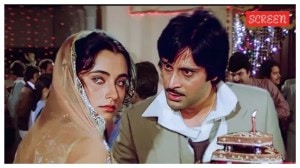Get ready for UTI MF shares
The management of UTI Mutual Fund, led by chairman Meleveetil Damodaran, has begun work on a proposal which envisions a new, and different, ...

The management of UTI Mutual Fund, led by chairman Meleveetil Damodaran, has begun work on a proposal which envisions a new, and different, ownership structure for itself.
The new structure is likely to be that of a holding company and one where the ownership will be widely distributed with the public. This will mean that the public will get to own shares in such a company.
The necessity for the new ownership structure has come about because of an obvious conflict of interest inherent in UTI MF’s current structure. All four of UTI MF’s current sponsors — Life Insurance Corporation of India, Bank of Baroda, State Bank of India and Punjab National Bank — have their own mutual funds.
While the government has already initiated discussions with other banks and institutions which do not have their own funds, with a view to replacing the current four, UTI MF’s own top management is working on the alternative ownership structure for the longer term.
The new ownership structure is also aimed at preserving the UTI brand by bringing under the fold of the new structure those other institutions which carry the UTI brand name. In other words, the holding company will then have stakes in other UTI group entities. This plan takes into account the fact that eventually the UTI Specified Undertaking, generally known as UTI-I, will cease to exist.
Damodaran said the top management of the fund house was working on the alternate ownership structure and once it was completed, it would be presented before the government for a view.
“Things will be clear in a few months. We will present two or three alternatives to the government,” Damodaran said.
One option being worked on by the UTI MF team is that of a holding company, where the ownership will also be widely distributed. However, one angle which will have to be carefully examined here is the Sebi regulations, which stipulate that the “sponsor” of a mutual fund must contribute at least 40 per cent of the net worth of the asset management company. Whether a holding company with a widely distributed shareholding will fit the bill as sponsor under the regulations will have to be seen.
It is also possible that before the new structure is put in place, the existing lot of sponsors may be replaced with new ones, in what would be a transition period. Banks which don’t have funds of their own, and could qualify as potential sponsors would be those like Oriental Bank of Commerce, Corporation Bank, Union Bank of India, Bank of India and Syndicate Bank.
Photos



- 01
- 02
- 03
- 04
- 05




























